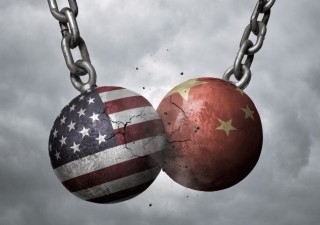What’s your status, Myanmar?
24 August 2020

The soft launch of Myanmar’s new electronic trademark system is still on hold (originally scheduled for January 2020) with no official announcement when it will commence. Yet, preparations by the relevant government offices are ongoing, including the training of official staff of the Myanmar IP department.
“The new electronic registration system is highly anticipated, and rights owners are eager to file their applications,” says Andy Leck, head of IP at Baker McKenzie in Yangon. “However, since it is not yet available, rights owners are constrained to register new marks or renew existing marks under the current and prevailing system, and this may impact overall costs and budget especially for clients with large portfolios. Launching the new trademark registration system would be a very welcome development to address this.”
New rules
A draft of the trademark rules is under review and consideration by the relevant government ministries. A working draft of the rules was issued for public comment and discussion in December 2019, and is now under discussion amongst the ministerial stakeholders. The rules will largely cover the forms and procedures for trademark applications in Myanmar, and separate rules and regulations are expected to cover official fees, trademark prosecution and inter partes trademark proceedings.
Given the time it takes, are the rules going to be better than the jurisdictions nearby in terms of official fee level and prosecution simplicity when they launch?
“It is difficult to compare trademark rules between jurisdictions, but we anticipate that the Myanmar rules would directly address the unique situation here where trademarks will have to be transitioned from the current to the new electronic system,” says Leck.
Applications and renewals
Application remains available in Myanmar under the current and prevailing practice of filing declarations of ownership of trademark and publications of cautionary notices. The firm recommends clients to continue filing their new marks or presently unregistered marks in Myanmar, under this pre-existing registration framework to take advantage of the protections currently available under Myanmar laws and practice.
Similarly, it recommends clients to proceed with renewal of all marks whose renewal period has fallen due. Note that in Myanmar it is customary, although not statutorily required, to renew marks every three years since registration. It recommends clients to keep to this established practice to conform with generally accepted trademark practices in Myanmar in order to avail themselves to protection. This is especially relevant to marks whose renewal due dates fall in 2020 but have yet to be renewed, having anticipated that the soft launch would have been launched by now and the marks already registered under the new system
“To be clear, the three-year renewal period applies to the current and prevailing system. The new incoming trademark law has a trademark term of 10 years,” says Andre Gan, managing partner at the firm in Yangon. “That said, it is unclear how the customary three-year renewal schedule has developed, but our research suggests this may have to do with the provision in the Myanmar Limitation Act which provides that a suit to demand compensation for infringement of copyright or any exclusive privilege (which may include trademarks), must be brought within three years. The practice of renewing marks every three years may have developed based on an interpretation of this provision. In contrast, the 10-year trademark term under the new trademark law removes any ambiguity in terms of renewal, and is also aligned with international standards.”
Infringement is still severe
Reports suggest that incidents of infringement remain high in Myanmar, and unfortunately remedies for infringement under the new trademark and copyright laws are unavailable as they have yet to take effect. That said, rights owners are not without recourse. The firm finds that engaging offenders directly is usually effective in addressing infringement quickly and cost effectively. This may be a viable option in the short term, as opposed to tolerating clear cases of infringement for the time being.
“We find that in most cases, infringers in Myanmar are unaware that copying or using of third party owned trademarks is legally prohibited,” Gan says. “We find that engaging and explaining the position of the rights owners is very productive in removing infringing moves from the market, as opposed to directly resorting to litigation, which would necessarily involve costs and fees.”
Other IP
Copyright protection continues to be governed under the 1914 Copyright Act which, being a rather dated law, has its limitations on protecting foreign work and modern creative works such as software. The firm continues to advise clients to consider these limitations in handling copyright protected work in Myanmar.
Industrial design and patent applications remain unavailable at this time. The firm understands that the launch of the design and patent registration systems may happen only after the electronic trademark registration system has been launched.
“The implementation of all the IP laws in Myanmar, including the patent and design laws, completes the legal framework of IP protection that would be expected of a modern commercial economy,” says Chadd Concepcion, senior associate at the same firm and location. “Among other reasons, this would give brand owners the confidence to invest in and explore Myanmar, knowing that their brand and IP resources are well protected.”
Johnny Chan






